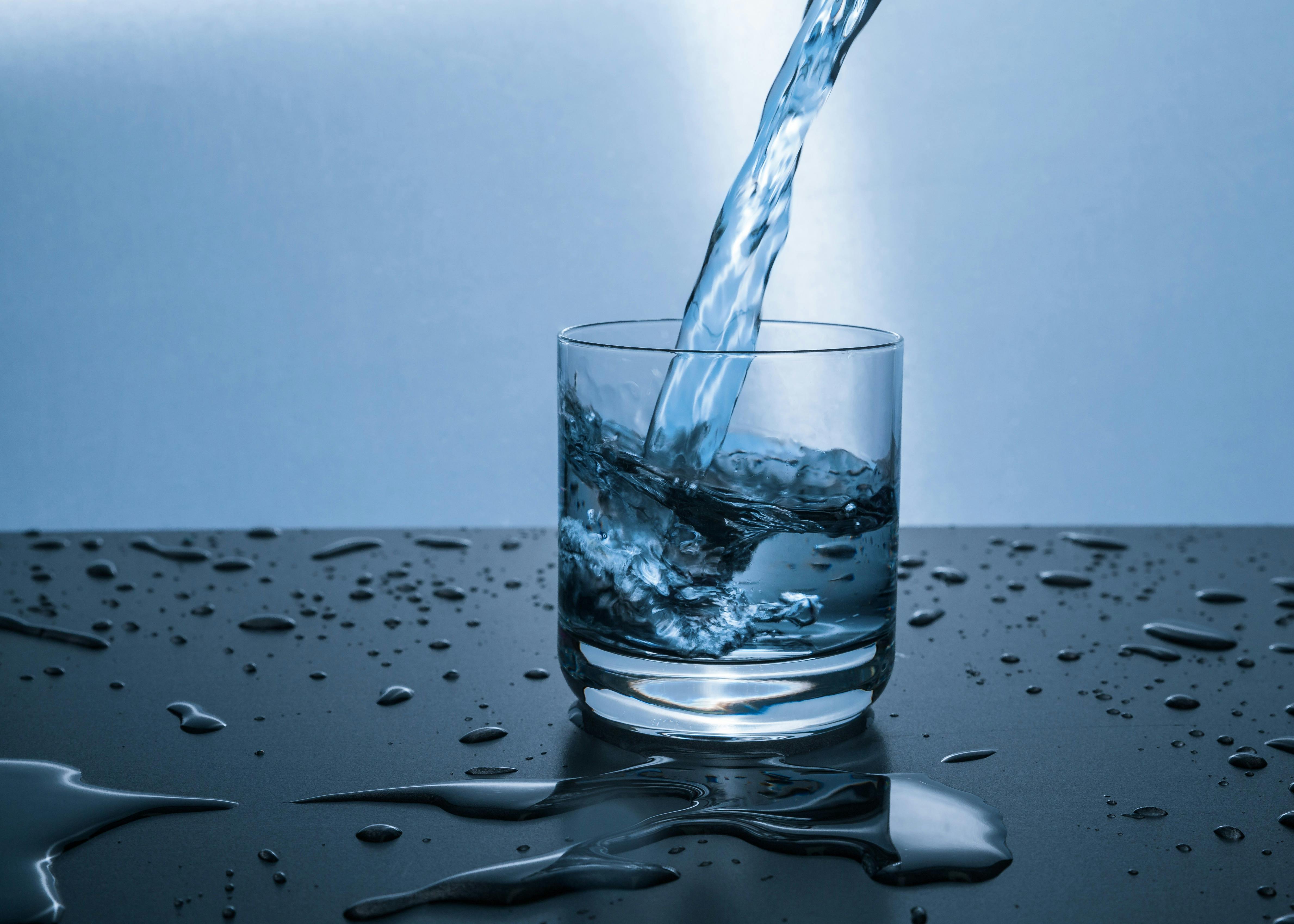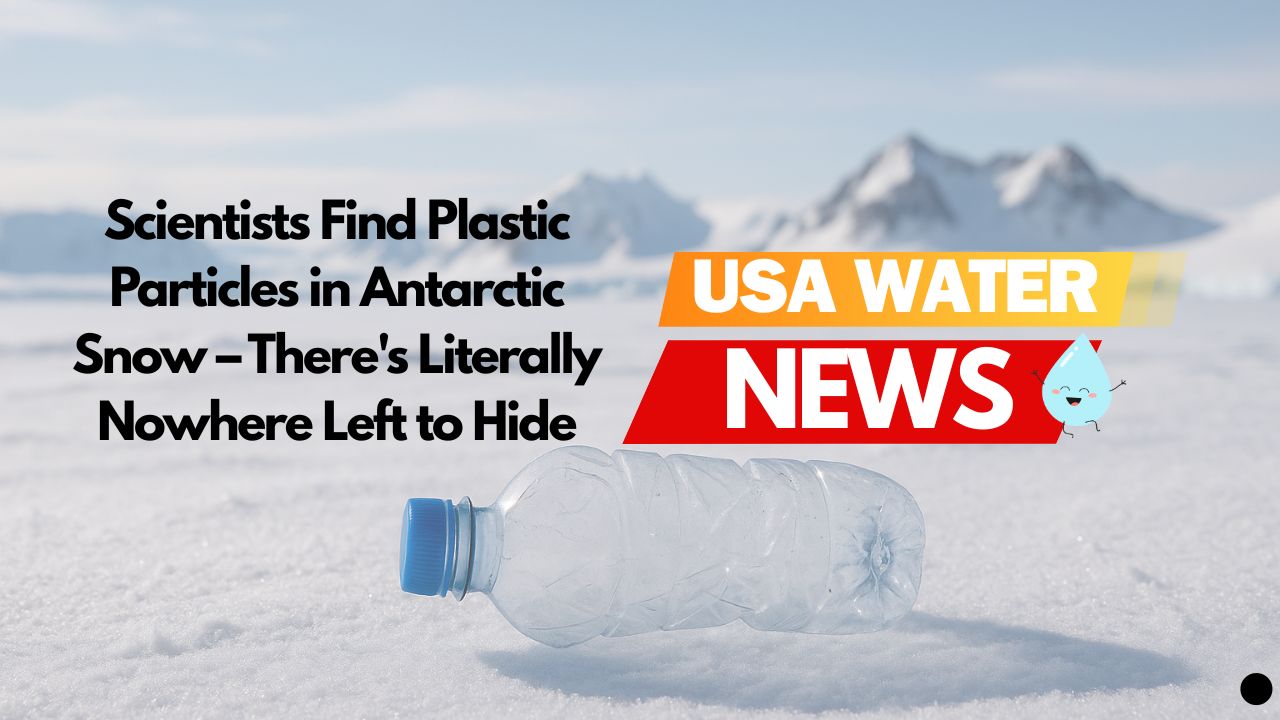If you thought you could escape microplastics by moving to the most remote place on Earth, think again. New research shows these tiny particles have reached literally every corner of our planet.
Picture the most isolated, pristine place you can imagine. Maybe it’s the top of a mountain where no human has ever set foot. Or perhaps it’s the middle of the ocean, thousands of miles from the nearest city.
Now imagine that even there – in the purest, most untouched places on Earth – scientists are finding tiny pieces of plastic from your old water bottles, food containers, and shopping bags.
That’s exactly what researchers discovered when they tested fresh snow in Antarctica. Even at the bottom of the world, in places where no plastic has ever been manufactured or thrown away, these microscopic particles are falling from the sky like invisible confetti.
The Discovery That Changed Everything
Dr. Alex Aves from the University of Canterbury was studying snow samples in Antarctica when she made a discovery that surprised even her. Using powerful microscopes, her team found an average of 29 microplastic particles in every liter of snow they tested.
Twenty-nine pieces of plastic. In every liter. In Antarctica.
“It’s incredibly sad but finding microplastics in fresh Antarctic snow highlights the extent to which we’ve polluted our planet,” Dr. Aves told reporters after the study was published.
The particles were tiny – most smaller than the width of a human hair. But they were definitely there, and they were definitely plastic.
How Did Plastic Get to Antarctica?
Here’s where the story gets really wild. Antarctica doesn’t have any cities, factories, or garbage dumps. The closest major population centers are thousands of miles away across some of the roughest oceans on the planet.
So how did plastic particles from your neighborhood end up in Antarctic snow?
The answer is both simple and terrifying: they flew there.
When plastic breaks down, it doesn’t disappear – it just gets smaller and smaller until the pieces are light enough to float through the air like dust. These microscopic fragments can travel on wind currents for thousands of miles, crossing oceans and continents before finally falling back to Earth.
Think about it like this: that plastic water bottle you threw away last month could have broken down into millions of invisible pieces. Some of those pieces might have blown around your city for weeks. Others could have gotten caught up in air currents and traveled around the world.
Eventually, some of those particles might fall as “plastic snow” in places where no human has ever even visited.
The Global Plastic Highway
Scientists are now discovering that Earth’s atmosphere has become like a highway system for plastic particles. These tiny fragments get picked up by wind in one place and can travel incredible distances before coming down somewhere else.
Researchers have found microplastics in:
- Mountain peaks in the Pyrenees (hundreds of miles from the nearest city)
- Remote islands in the Pacific Ocean
- Arctic sea ice thousands of miles from any plastic source
- Rain falling in national parks
- And now, Antarctic snow
Dr. Steve Allen, who studies atmospheric plastic transport, explains it like this: “We’ve created a global plastic cycle. Just like water evaporates and falls as rain, plastic breaks down and travels through the air before settling in places we never expected.”
What This Means for Wildlife
Antarctica might seem empty to us, but it’s actually home to millions of animals – penguins, seals, whales, and countless types of birds and sea creatures.
These animals evolved in one of the cleanest environments on Earth. They never had to deal with pollution or man-made chemicals. But now, even in their pristine home, they’re being exposed to plastic particles.
Scientists are finding microplastics in:
- Penguin stomachs
- Seal tissues
- Whale blubber
- Bird eggs
- Fish that live in Antarctic waters
The long-term effects are still unknown, but early research suggests these particles can disrupt animals’ digestive systems, hormone levels, and reproductive abilities.
The Invisible Invasion
What makes this discovery so unsettling is that microplastics are completely invisible to us. You can’t see them, smell them, or taste them. But they’re everywhere – in the air we breathe, the water we drink, and now even in the snow falling on the most remote places on Earth.
Recent studies have found microplastics in:
- Human blood and lungs
- Tap water around the world
- Sea salt and honey
- Beer and bottled water
- Fresh fruits and vegetables
In other words, these particles have gotten into literally every part of the global ecosystem. There’s no escaping them anymore.
How Much Plastic Are We Talking About?
The numbers are staggering. Scientists estimate that humans have produced over 9 billion tons of plastic since the 1950s. Most of that plastic is still around somewhere – either in landfills, floating in oceans, or broken down into microscopic pieces traveling through the air.
Every minute, the equivalent of a garbage truck full of plastic enters our oceans. Every year, we produce over 300 million tons of new plastic waste. And almost none of it truly disappears – it just gets smaller and spreads further.
The plastic water bottle you bought this morning will still exist in some form 500 years from now. It might be broken down into billions of invisible pieces scattered across the planet, but it won’t be gone.
What Scientists Are Learning
Researchers studying the Antarctic snow samples made some other disturbing discoveries:
The particles came from everywhere: Chemical analysis showed the plastic fragments came from all over the world – North America, South America, Australia, and other continents.
They’re incredibly small: Most particles were smaller than 0.05 millimeters – so tiny that they can get deep into animal tissues and possibly even individual cells.
They’re diverse: The team found 13 different types of plastic, including pieces from bottles, bags, clothing, and packaging materials.
The contamination is recent: By comparing snow from different depths, scientists could tell that most of the plastic pollution arrived in just the last few decades.
The Reality Check
Dr. Aves and her team want people to understand what this discovery really means: “We’ve fundamentally changed our planet’s atmosphere. Microplastics are now part of the weather system.”
This isn’t just an environmental problem – it’s a sign that human activity has altered the basic functioning of Earth’s natural systems. We’ve created a new type of pollution that can travel anywhere and settle everywhere.
The Antarctic discovery proves that there are no “safe” places left on Earth when it comes to plastic pollution. If microplastics can reach the most isolated continent on the planet, they can reach anywhere.
What This Means for You
Finding plastic in Antarctic snow doesn’t directly affect your daily life, but it does tell us something important about the world we’re living in.
Every piece of plastic you’ve ever used – every bottle, bag, container, and wrapper – is still out there somewhere. And increasingly, “somewhere” includes the air around us and the most remote places on Earth.
The good news is that this problem is entirely human-made, which means it’s something we can actually do something about. We created the global plastic pollution problem, and we can work to solve it.
Looking Forward
Scientists studying microplastics say we need to think about this problem differently. Instead of just focusing on cleaning up plastic that’s already out there, we need to dramatically reduce how much new plastic we’re creating in the first place.
Some researchers are working on plastics that break down completely instead of just getting smaller. Others are developing better ways to capture plastic particles before they spread through the environment.
But the most important changes might be the simplest ones: using less plastic, reusing what we have, and making sure plastic waste gets properly recycled instead of blowing around in the wind.
The Bottom Line
The discovery of microplastics in Antarctic snow is like finding pollution in the last clean place on Earth. It’s a wake-up call that shows how far-reaching the consequences of our plastic use have become.
Your plastic water bottle might seem like a small thing, but multiply that by billions of people over decades, and you get plastic particles falling like snow on penguins who have never seen a human being.
It’s a reminder that in our interconnected world, nothing we do stays local anymore. The choices we make in our daily lives can literally end up anywhere on the planet – even places we’ve never been and will never see.
The next time you’re about to throw away a piece of plastic, remember the scientists in Antarctica, finding fragments of our modern life in the purest snow on Earth. It’s a powerful reminder that on this planet, there really is no “away” to throw things to anymore.
Research led by Dr. Alex Aves from the University of Canterbury found an average of 29 microplastic particles per liter in fresh Antarctic snow samples. Chemical analysis revealed the particles originated from multiple continents and included 13 different types of plastic. This discovery demonstrates that atmospheric transport can carry microplastics to even the most remote locations on Earth, with potential implications for Antarctic wildlife and ecosystems.
Check your water now!
We have translated and compiled water reports on every state in the US, and covered over 100 cities. Find out how good your water is today!

Please read – our information
The information presented on cleanairandwater.net is compiled from official water quality reports, trusted news sources, government websites, and public health resources. While we strive for accuracy and thoroughness in our presentations, we are not scientists, engineers, or qualified water quality professionals.
Our mission is to present water quality information in an accessible, real-world format that helps people understand what’s in their water and make informed decisions about their health and safety. We believe that complex environmental information should be available to everyone in a format that’s easy to understand.
We make every effort to ensure our content is current and accurate, but we cannot guarantee that all information is complete or error-free. This website should not replace official communications from your local water utility or health department. We always recommend consulting official sources for the most up-to-date information regarding your specific water system.
Clean Air and Water is not liable for any unintentional errors, omissions, or outdated information. The content on this site is provided for informational purposes only and should not be considered professional advice.

